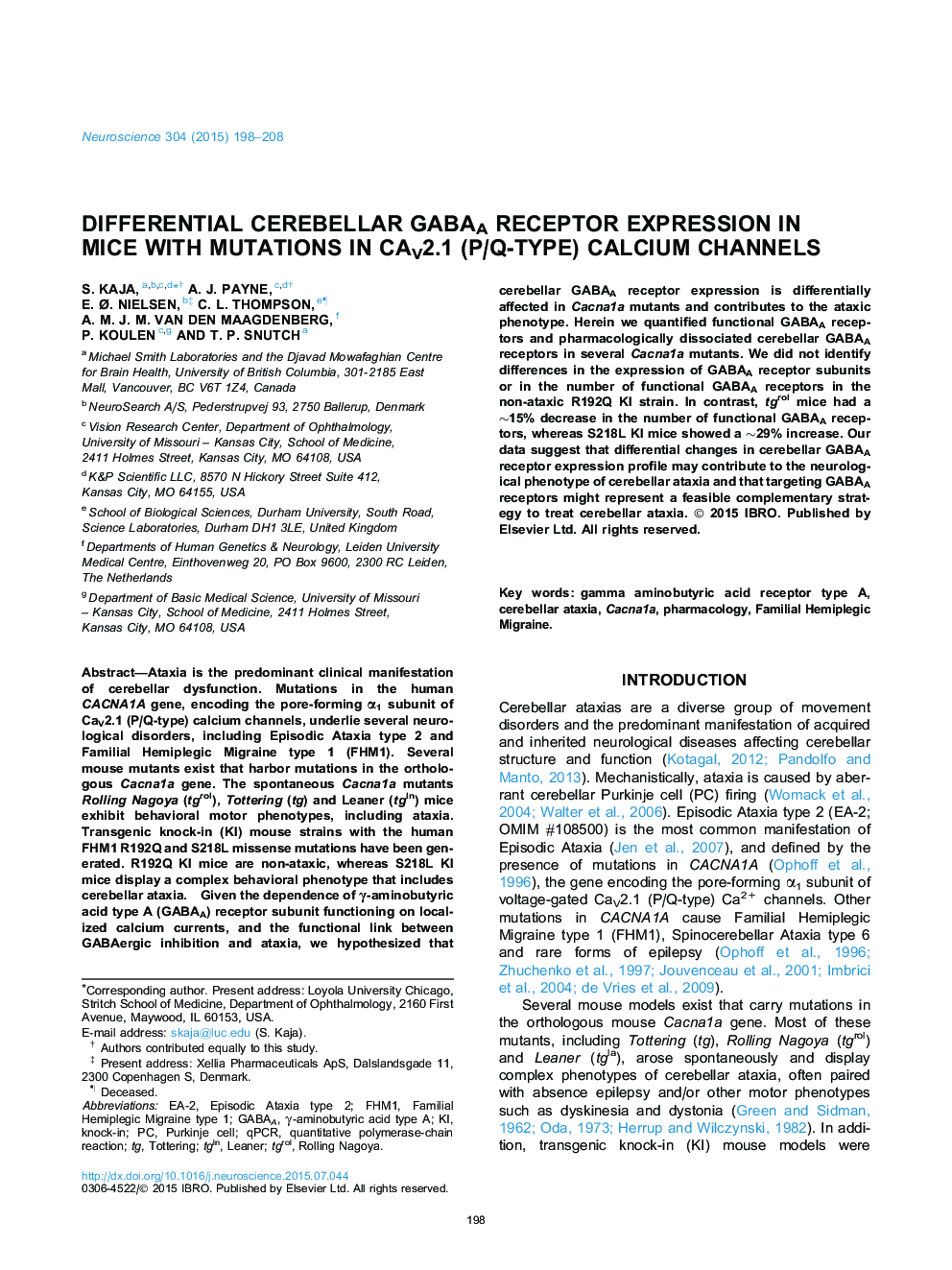| Article ID | Journal | Published Year | Pages | File Type |
|---|---|---|---|---|
| 6272384 | Neuroscience | 2015 | 11 Pages |
â¢Non-ataxic R192Q KI mice have normal cerebellar GABAA receptor expression.â¢Ataxic tgrol mice have a 49% reduction of δ subunit-containing GABAA receptors.â¢Ataxic S218L KI mice have a 29% increase in cerebellar GABA binding sites.â¢Ataxia-associated Cacna1a mutations cause differential GABAA receptor abnormalities.â¢GABAA receptors are a novel target for future development of anti-ataxia therapy.
Ataxia is the predominant clinical manifestation of cerebellar dysfunction. Mutations in the human CACNA1A gene, encoding the pore-forming α1 subunit of CaV2.1 (P/Q-type) calcium channels, underlie several neurological disorders, including Episodic Ataxia type 2 and Familial Hemiplegic Migraine type 1 (FHM1).Several mouse mutants exist that harbor mutations in the orthologous Cacna1a gene. The spontaneous Cacna1a mutants Rolling Nagoya (tgrol), Tottering (tg) and Leaner (tgln) mice exhibit behavioral motor phenotypes, including ataxia. Transgenic knock-in (KI) mouse strains with the human FHM1 R192Q and S218L missense mutations have been generated. R192Q KI mice are non-ataxic, whereas S218L KI mice display a complex behavioral phenotype that includes cerebellar ataxia.Given the dependence of γ-aminobutyric acid type A (GABAA) receptor subunit functioning on localized calcium currents, and the functional link between GABAergic inhibition and ataxia, we hypothesized that cerebellar GABAA receptor expression is differentially affected in Cacna1a mutants and contributes to the ataxic phenotype. Herein we quantified functional GABAA receptors and pharmacologically dissociated cerebellar GABAA receptors in several Cacna1a mutants. We did not identify differences in the expression of GABAA receptor subunits or in the number of functional GABAA receptors in the non-ataxic R192Q KI strain. In contrast, tgrol mice had a â¼15% decrease in the number of functional GABAA receptors, whereas S218L KI mice showed a â¼29% increase. Our data suggest that differential changes in cerebellar GABAA receptor expression profile may contribute to the neurological phenotype of cerebellar ataxia and that targeting GABAA receptors might represent a feasible complementary strategy to treat cerebellar ataxia.
Graphical abstractDownload high-res image (104KB)Download full-size image
